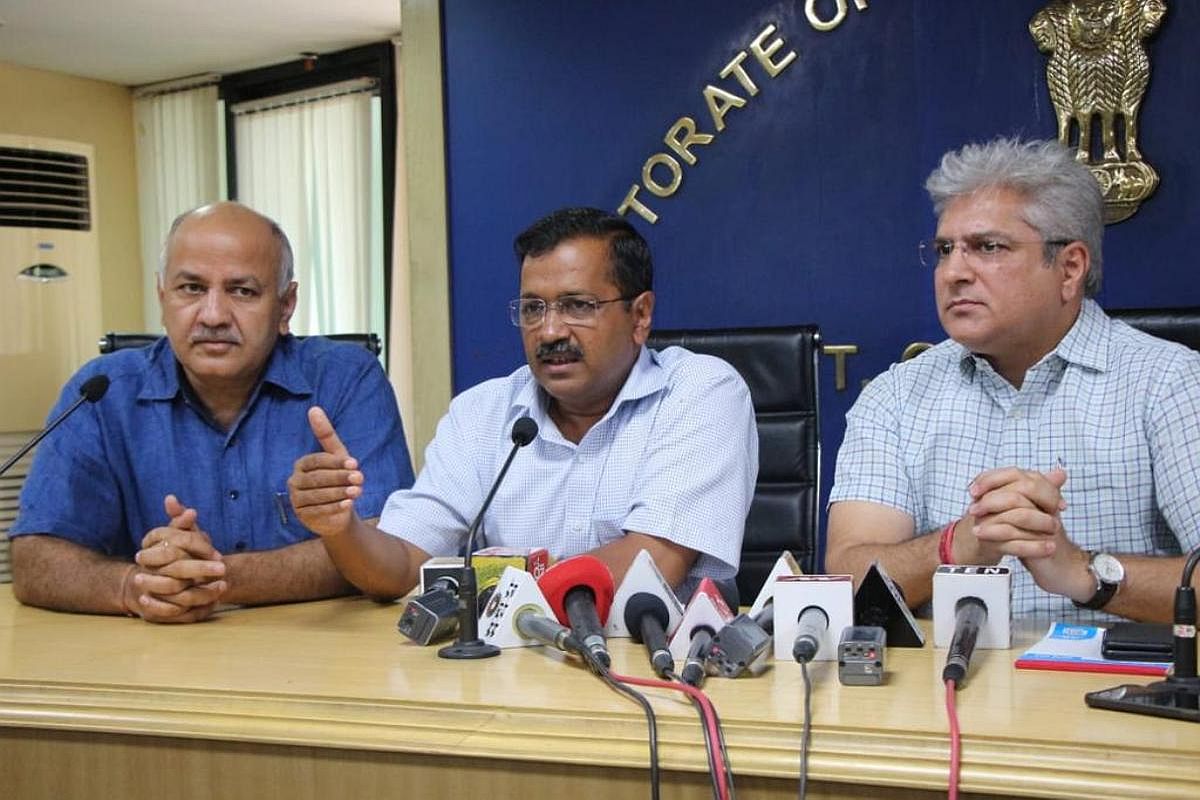As the air quality in Delhi entered the second-worst severe category on Tuesday, Chief Minister Arvind Kejriwal appealed “with folded hands” to Punjab and Haryana to take concrete steps against stubble burning to prevent the national capital from turning into a “gas chamber”.
Punjab and Haryana have recorded an increase of at least 2,400 farm fires, a major contributor to the air pollution in Delhi, till October 27, government data shows.
Advertisement
I appeal to the Punjab and Haryana governments with folded hands on behalf of the residents of Delhi to take strong steps and prevent Delhi from becoming a gas chamber. At our level, we are making all possible efforts and will continue to do so,” he tweeted in Hindi.
Later, the Delhi government said in a statement that the latest NASA images show a drastic spurt in crop residue burning in the neighbouring states.
The stubble plume from north-west regions has become one of the significant factors in adversely affecting Delhi’s air quality.
“The effective stubble fire counts of Haryana and Punjab have increased from 1,654 to 2,577 during the past 24 hours, which is a matter of extreme concern for the residents of Delhi,” it stated.
Addressing the media, AAP leader Dilip K Pandey said that stubble burning in Punjab and Haryana has drastically increased which has led to a severe spike in Delhi’s pollution.
“Every political party should come together going above the political ideology to combat pollution,” he added.
Another Aam Aadmi Party leader Atishi said that till the time the Centre, Punjab and Haryana governments do not take stern action, Delhi alone can’t fight pollution.
On Tuesday, the north-westerly wind direction might increase stubble plume to move towards Delhi and as per SAFAR-model, the stubble share may touch this year’s peak now.
Several parts of Delhi were experiencing ”severe” air pollution on Tuesday. Delhi’s air quality index (AQI) turned hazardous with thick haze covering the city and the AQI index shooting up sharply.
The AQI takes into account five chief pollutants, including the PM10 and PM2.5. The higher the AQI value, the greater the health concern.
Post Diwali, the Delhi NCR region has been choked by high pollution levels after bursting of firecrackers.
However, the air quality has turned out better than the last three years post-Diwali, according to government data.
The Ministry of Earth Sciences’ air quality monitoring service, SAFAR, had earlier predicted that the city’s overall air quality index (AQI) would enter the “severe” category between 1 am and 6 am on Monday, primarily due to firecracker emissions, unfavourable weather and a significant spike in stubble burning.
But, Delhi sprung a surprise with air quality sensors recording only a marginal increase in pollution levels even though people continued bursting crackers until late on Sunday night, violating the Supreme Court-enforced two-hour limit with impunity.











